Learn Chess. Learn Life Lessons.
Come, join us and transform your kid’s life through chess.
Join Online Coaching Join In-Person Coaching
A Complete Learner’s Guide. The Ruy Lopez Opening is one of the most popular openings played by White and is also considered one of the best ways for White to gain an advantage in the Opening. World Champions across the world have been playing the Ruy Lopez Opening exhaustively since the early 20th century.
The Ruy Lopez is a very popular Spanish Opening named after the Spanish Priest of the 16th century – Ruy Lopez de Segura. This opening did not get immediately popular as openings like the King’s Gambit were popular around this time. It was towards the end of the 19th century when the Ruy Lopez Opening became famous. The opening begins as follows:
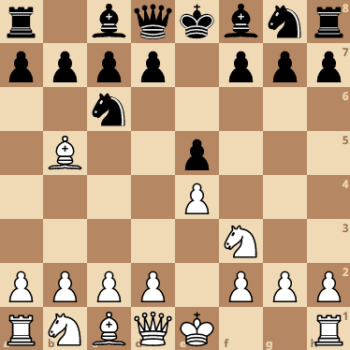
The 16th-century Spanish priest devised a study on the Ruy Lopez Opening in a book called Libro del Ajedrez that was written in 1561. The opening was popularised when Carl Jaenisch, the Russian theoretician, rediscovered this opening in the mid-19th century. A common nickname for this opening is “The Spanish Torture”, as Black finds it difficult to achieve equality.
The concept behind Bb5 on the third move is to attack the Knight on c6 that is defending the e5 pawn. White is attacking the e5 pawn with the White Knight on f3. However, White’s idea to win the c6 Knight is tricky as if White plays Nxe5 followed by the Bishop and Knight exchange, Black can respond with a Queen fork, attacking the White pawn on e4 and Knight on e5, by playing Qd4:
Irrespective of this exchange, Bb5 is a good move as it promotes the development of the White pieces and allows White to castle on the next move. Bb5 also sets a potential pin on the Black Knight and King. The main reason behind Bb5 is to disrupt Black’s pawn structure.
The Ruy Lopez Opening is best developed in Open Games, where there are multiples variations of the opening. Let’s take a look at all the possible variations:
Black’s most common third move is 3..a6 which puts White in a position where White has to decide whether to take the Knight on c6 or not. Black plans to follow a6 with b4 to break the pin if White retreats with Ba4. The move a6 became popular and got its name when the World Champion Paul Morphy started playing this as the third move.
The most common variation of the Morphy Defense is the Closed Variation :

By playing Bxc6 instead of Ba4, White disrupts Black’s pawn structure and gives White an opportunity to play d4. This would pave a path for major exchanges allowing the game to progress to the end game. After Qxd4, White is in control of the centre, and White has an advantage.
In this position, the Noah’s Ark Trap is a trap that White should look out for:
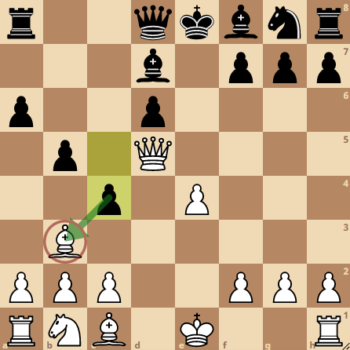
The variation aims to capture the White Bishop; however, this variation is often considered too time-consuming:

A sacrifice that could take place on the 6th move would be Bxf7 which would be followed by Nxe5, which would force the Black King to move out. However, after this sacrifice, White may find it difficult to maintain this position; hence the sacrifice may be ambitious for some players. Thus, the common combination is as explained above.
In this variation, White plays d4 on the 5th move, and this variation was named after George Henry Mackenzie. This variation does not provide any advantage in theory according to modern strategies. This line then continues with exd4 and transposes into the Open Defence.
This variation is also called the Russian Defence, where White castles and then Black then plays d6. This defence was played by players like Rubinstein and Alekhine.
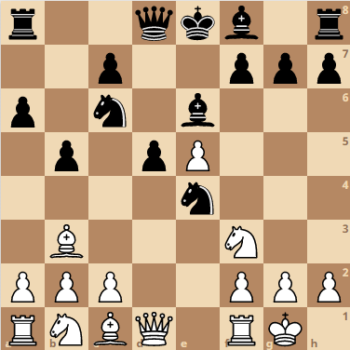
This variation allows Black to use the time that White takes to regain a pawn by trying to gain control in the centre.
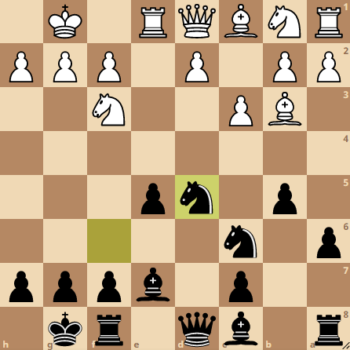
An aggressive variation for Black to adopt in response to the Ruy Lopez Opening is the Marshall Attack.
In this variation, Black sacrifices a pawn, and the sacrifice allows Black to remove White’s Kingside defenders. This also gives Black a lead in development, and Black can pose a strong attack on White’s Kingside.
In this variation, Black responds to Bb5 with Nf6 instead of a6 and has been played by World Champions like Kasparov, Carlsen and Anand. White usually responds with castling, and Black can play Nxe4. White may have an advantage because of a slightly better pawn structure as compared to Black’s pawn structure.
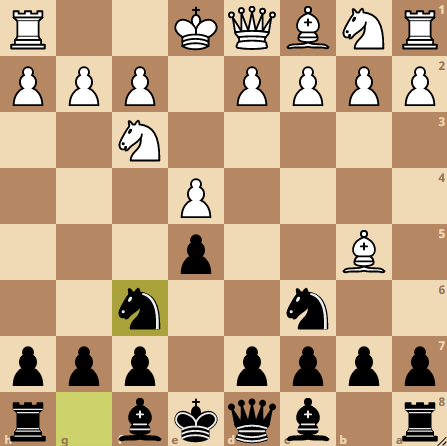
As a result of a break in Black’s pawn structures, Black may try to gain space on the Queenside with moves like a6 and b5. This may represent a Queenside attack or a Queenside counterplay which may be a cause of a weakness while playing the Ruy Lopez Opening.
| RESULTS | PERCENTAGE |
|---|---|
| White Wins | 33.1% |
| Black Wins | 34.0% |
| Draws | 32.9% |
The Ruy Lopez Opening is a great start for White as it allows White to develop its pieces, and White has the capability to disrupt Black’s pawn structure. This allows White to gain a positional advantage. It is also considered a great opening for beginners as it gives White an attacking start.
The Ruy Lopez Opening has the potential to become an aggressive opening depending on Black’s responses. Morphy Defense is one of the aggressive variations of the Ruy Lopez Opening.
The point of the Ruy Lopez Opening is for White to break Black’s pawn structure in the opening.
The Ruy Lopez has an Open and Closed variation.
As White or Black, if you are familiar with the opening, Beginners can play the opening, as long as they are aware of the possible traps and loopholes.
Black gains a solid position in the Ruy Lopez Exchange Variation which is a great variation for Black to choose to play. The other variations require Black to have a slight amount of skill to tackle the positions.
Learn Chess. Learn Life Lessons.
Help your child improve their Strategic Thinking, Critical Thinking, Time Management, etc. through the game of Chess.

This article is technically edited and reviewed by Grand Master Marian Petrov.

CHESS KLUB offers chess classes for kids and adults of all levels. Our coaches include FIDE, National, International and Grand Masters among many.
We offer Online and Classroom coaching.
CHESS KLUB has coaching centers in the US and India now!
Do you want to see your kid excel in Chess?
Learn Chess. Learn Life Lessons.
